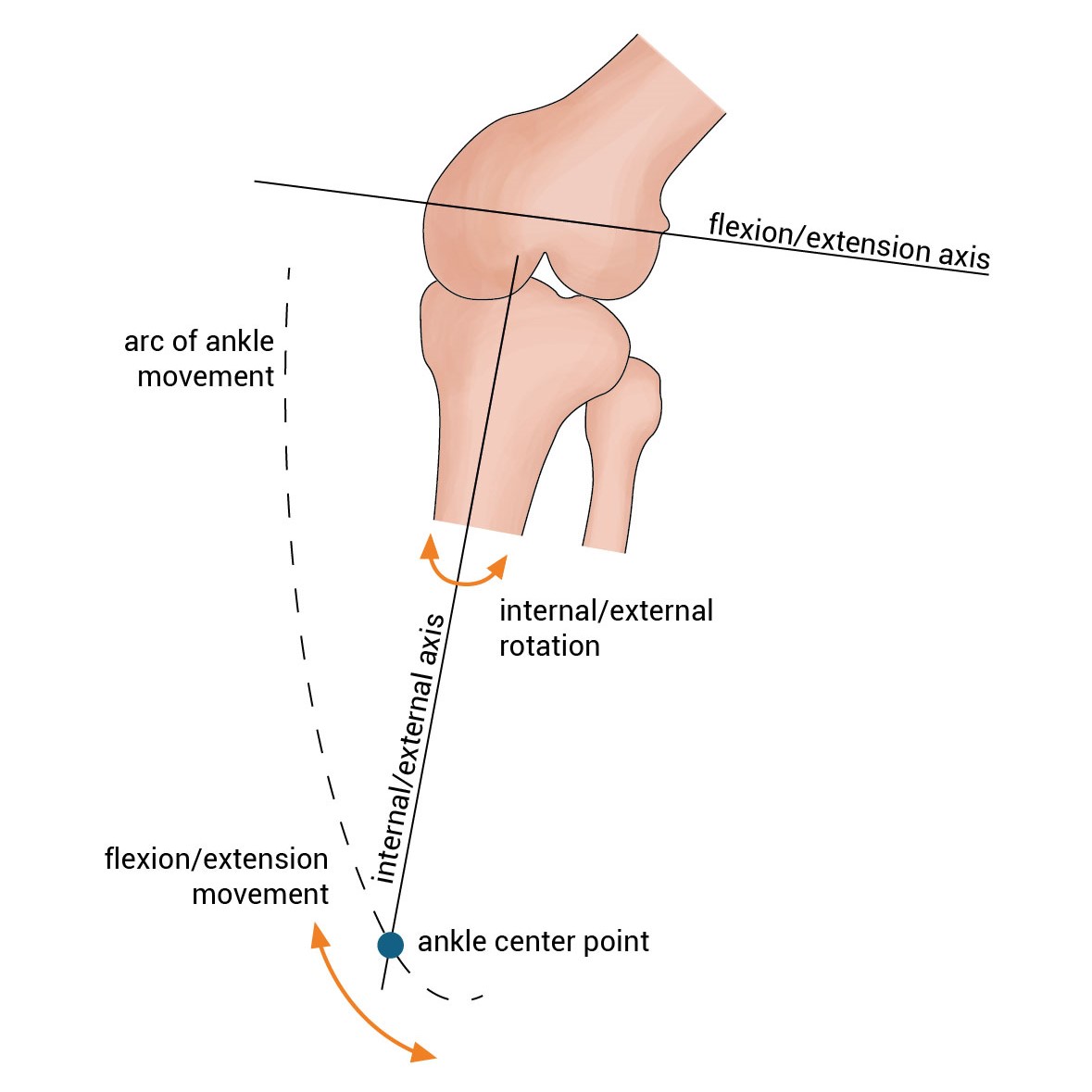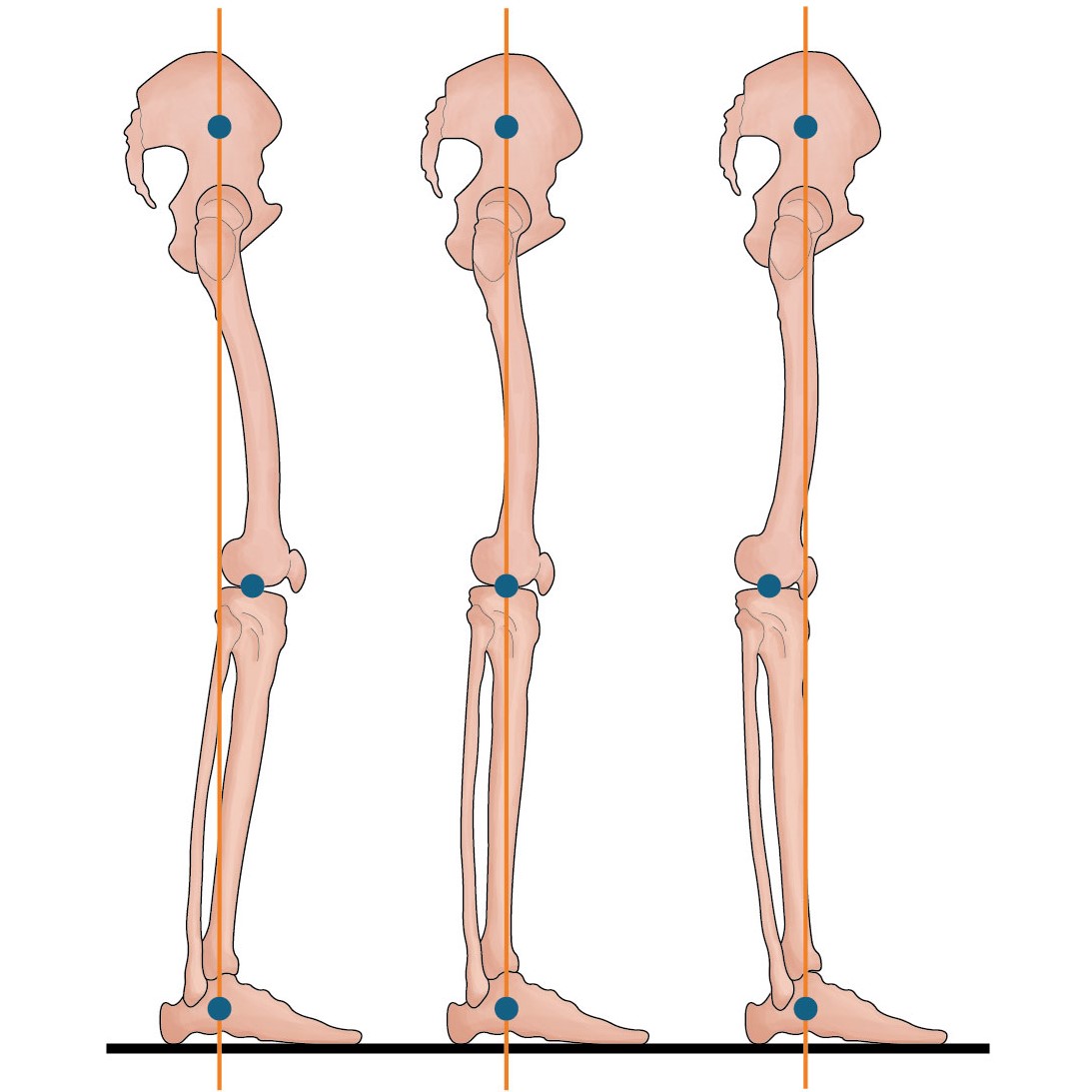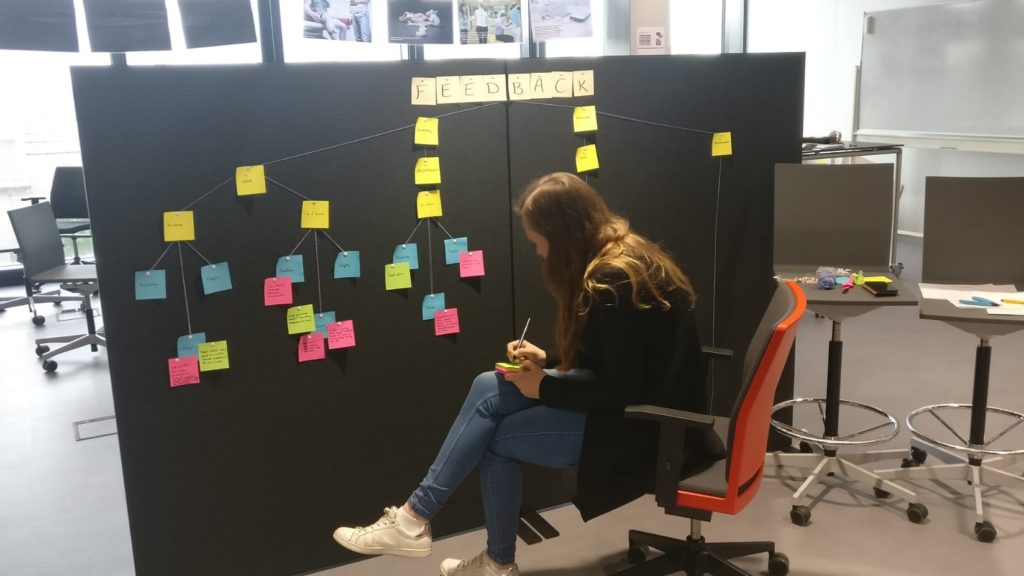Knee Motion Monitor & Feedback System
Design Project I Rehabilitation
Collaboration: Libra (Rehabilitation center)
Target group: People that suffer from hyperextension in their knee(s)
Collaboration: Libra (Rehabilitation center)
Target group: People that suffer from hyperextension in their knee(s)
Individual work I
Bachelor thesis
2/3 of time of 16 weeks, Spring 2019 I Eindhoven University of Technology
2/3 of time of 16 weeks, Spring 2019 I Eindhoven University of Technology
Current situation:
One of the target groups who is treated at Libra (rehabilitation center), are patients that hyperextend their knee during their daily activities, like walking. This is very harmful for the knee, but due a neurological
background most of these patients are unaware of hyperextending their knee.
Physiotherapists try to train these patients to improve this undesirable situation for them. However, for this they are dependent on their eyesight which seems to be problematic in practice. These physiotherapists have
therefore a bad overview when, how often and how extreme these patients hyperextend their knee.
For both problems no tools exist that can help the patients or physiotherapists in these situations.
background most of these patients are unaware of hyperextending their knee.
Physiotherapists try to train these patients to improve this undesirable situation for them. However, for this they are dependent on their eyesight which seems to be problematic in practice. These physiotherapists have
therefore a bad overview when, how often and how extreme these patients hyperextend their knee.
For both problems no tools exist that can help the patients or physiotherapists in these situations.
Goals:
Making patients more aware when they hyperextend their knee and give physiotherapists a better understanding when, how often and how extreme hyperextension occurs by their patients
Challenges:
1) Making an accurate system to measure the angle of the knee
2) Giving feedback to the patients and physiotherapists
2) Giving feedback to the patients and physiotherapists
PHASE 1: RESEARCH
THEORETICAL BACKGROUND
How does a knee work?
What is hyperextension?


The knee is a hinge joint, that can move over two axis. The main movement of the knee is flexion/extension. Next to that the knee allows a small rotation, this is called the internal/external rotation.
Hyperextension in the knee means that the knee joint is bent backward and located behind the center of gravity (orange lines). Position of legs: left = flexion, middle = zero-stand, right = hyperextended (too much extension).
INSIGHTS MEETING CLIENTS AND PHYSIOTHERAPIST
General information:




Age patients
Begin status
Rehabilitation time
Duration session
Mainly 50-60 years
(variating 16-85)
(variating 16-85)
Patients have a disturbed walking pattern or cannot walk anymore
Mostly 3 months (variating 2 weeks
- half a year)
- half a year)
30 minutes,
often 3 times a week
often 3 times a week
What is the process at the moment people enter Libra?

My focus, in this overall rehabilitation process, is on the discipline of the physiotherapist
Selection of exercises executed during physiotherapy session:
Walking with rollator
Walking without help equipment
Turning around
Doing squats
Stepping on and off a platform
Lifting weights
“This wrong walking pattern should be eliminated as fast as possible from people’s brains, the sooner the better”
- Wouter Hoens, physiotherapist at Libra
Findings about my challenges:
1st challenge (measurement knee angle):
> While calibrating the system, it’s needed to set an individual zero-line, because everyone’s zero-stand is different.
2nd challenge (feedback):
> Direct visual feedback to patients is only feasible to implement in exercises were they more or less stick to their place.
> Direct visual feedback to physiotherapist is not ideal, because they often need to help their patients physically during an exercise.
> Haptic feedback to patients cannot be only feedback, because this doesn’t help the physiotherapist to get a better overview.
> Direct visual feedback to physiotherapist is not ideal, because they often need to help their patients physically during an exercise.
> Haptic feedback to patients cannot be only feedback, because this doesn’t help the physiotherapist to get a better overview.
Key insights:



It’s time consuming for physiotherapists to point out every time they see patients hyperextend their knee(s).
Pointing out when hyperextension
occurs can only be done in
physiotherapy sessions.
occurs can only be done in
physiotherapy sessions.
It can take weeks before patients
get an understanding when they
hyperextend their knee(s).
get an understanding when they
hyperextend their knee(s).
PHASE 2: MEASUREMENT KNEE ANGLE
Programming:

Writing a code in Arduino and running tests with sensors on a wooden hinge joint (a simplified knee model).
Further details on the measurement of the knee angle are currently CONFIDENTIAL
PHASE 3: FEEDBACK
Exploration of feedback possibilities:

I looked into the positive and negative aspects of giving direct auditory, visual and haptic feedback
to patients in the physiotherapy session, to patients outside the sessions and to physiotherapists in the sessions.
Further I explored the requirements for giving afterwards feedback to patients as well to physiotherapists.
to patients in the physiotherapy session, to patients outside the sessions and to physiotherapists in the sessions.
Further I explored the requirements for giving afterwards feedback to patients as well to physiotherapists.
Further details on giving feedback to patients and physiotherapists are currently CONFIDENTIAL
FINAL DESIGN
Technical validation:
The Knee Motion Monitor & Feedback System can measure angles with an
accuracy of at least 3 degrees
User validation:
“This is what we need”
“Giving feedback like this goes way faster and better than when I have to explain it in words the whole time”
“It is of course an assumption, but I think this brace has a lot of potential and
eventually could speed up the rehabilitation process with half of the time”
eventually could speed up the rehabilitation process with half of the time”
- Wouter Hoens, physiotherapist at Libra
Select some other work
Deprecated: Creation of dynamic property WP_Query::$comments_by_type is deprecated in /home/desireed/domains/desireedriessen.com/public_html/wp-includes/comment-template.php on line 1528